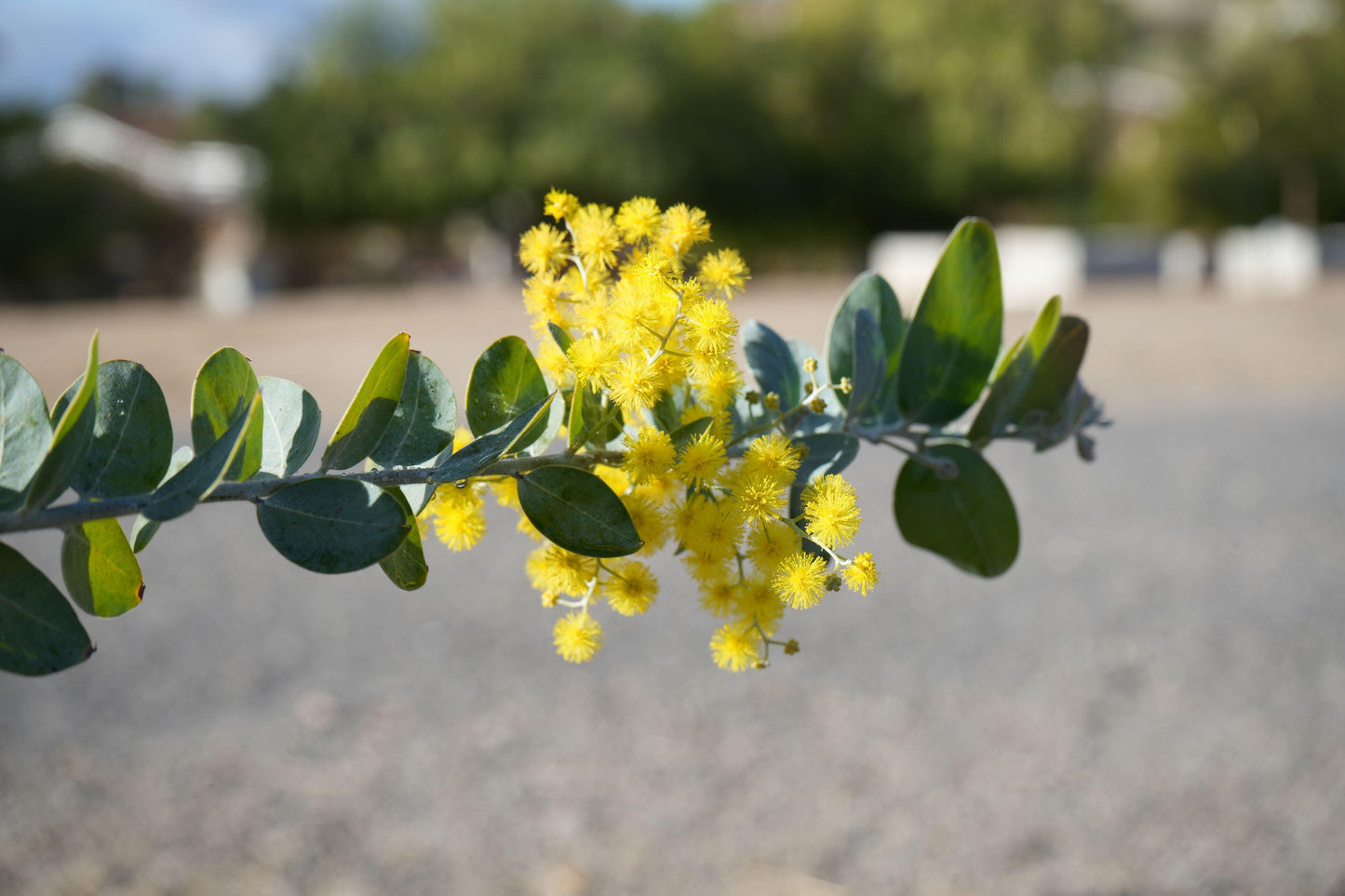Bonte Farm
Acacia podalyriifolia: Pearl Acacia Magic, yellow pompom flowers
Acacia podalyriifolia: Pearl Acacia Magic, yellow pompom flowers
Couldn't load pickup availability
💛 Pearl Acacia (Acacia podalyriifolia): The Silver-Leaved, Winter Bloom Showstopper
The Pearl Acacia (Acacia podalyriifolia) is an exceptionally beautiful, fast-growing Australian shrub or small tree cherished for its stunning ornamental features.1 It is a prized choice in Mediterranean and drought-tolerant landscapes, delivering a spectacular flush of fragrant, brilliant yellow flowers primarily during the winter and early spring when color is scarce.2 Its signature feature is the silvery-grey foliage (known as phyllodes), which provides a striking textural contrast against darker greenery year-round.3 Highly adaptable, low-maintenance, and resistant to most common issues, the Pearl Acacia is an ideal specimen plant, screen, or bright addition to any water-wise garden.
Botanical Characteristics
|
Characteristic |
Detail |
|
Scientific Name |
Acacia podalyriifolia |
|
Common Names |
Pearl Acacia, Queensland Silver Wattle, Silver-leaf Acacia. |
|
Growth Habit |
A vigorous, erect, multi-branched evergreen shrub or small, rounded tree. It develops a dense canopy, often with a gracefully open structure. |
|
Foliage (Phyllodes) |
Features rounded to oval, leathery silvery-grey leaves (phyllodes) that are covered in fine, soft hairs. This year-round silver color is the source of its "Silver Wattle" common name. |
|
Flowers |
Profuse, fluffy, ball-shaped clusters of brilliant golden-yellow flowers. The blooms are highly fragrant and cover the entire plant, making a striking display. |
|
Flowering Season |
Primarily blooms in late fall and winter through early spring, providing crucial color and interest during the cooler months. |
|
Bark |
The bark is smooth and grey-green when young, becoming slightly rougher with age. |
Mature Size
The Pearl Acacia is versatile and can be maintained as a large shrub or trained into a small tree.4
- Height: Typically reaches a manageable 12–20 feet (3.6–6 meters) tall.5
- Spread: Achieves a comparable 10–15 feet (3–4.5 meters) spread, forming a handsome, rounded crown.
- It is a fast grower, quickly establishing itself in the landscape.6
USDA Hardiness Zone
This warm-climate species is best suited for USDA Hardiness Zones 9–11.7 While generally resilient to heat, it is susceptible to damage from hard freezes and prolonged cold temperatures.8 It thrives in mild, dry-summer climates.
Cultivation and Care
|
Aspect |
Care Instructions |
|
Sunlight |
Requires full, direct sun (at least 6-8 hours daily) to ensure dense growth and maximize its spectacular bloom display. |
|
Soil |
Demands excellent drainage and is highly adaptable to poor, rocky, or sandy soils. It tolerates slightly acidic to alkaline pH levels. Avoid waterlogged conditions at all costs. |
|
Water |
Extremely drought-tolerant once established, making it a perfect low-water garden choice. Water deeply during the first season; mature trees require minimal to no supplemental irrigation. |
|
Fertilizer |
Like many legumes, it is a nitrogen-fixing plant and generally requires little to no fertilization. Avoid high-phosphorus fertilizers, as this can harm the plant. |
|
Pruning |
Prune after the main flowering season to maintain a compact shape and manage size. It responds well to light shearing and can be trained into a single-trunk tree. |
Landscape Use
- Specimen & Focal Point: The unique silvery foliage and dramatic winter bloom make it a spectacular year-round feature plant.
- Screening and Hedge: Due to its dense, fast growth, it works well as a quick privacy screen or informal hedge.9
- Erosion Control: Suitable for planting on slopes where its root system can help stabilize the soil.10
- Water-Wise Garden: An essential component of xeriscape and Mediterranean-style landscaping.
Wildlife Attraction
The abundant fragrant flowers are a significant early season food source, attracting bees and various native pollinators.11 The dense structure provides good shelter and nesting sites for small birds.12
Pest and Disease Resistance
The Pearl Acacia is considered a tough, robust plant with high natural resistance to most common insect pests and plant diseases. The most significant threat is root rot, which is exclusively caused by poor drainage and excessive moisture. Planting in well-draining soil is the best preventative measure.
Propagation
The most common and effective method for propagating Acacia podalyriifolia is by seed. The seeds require scarification (lightly scratching the hard seed coat) or a hot water treatment to encourage successful germination.13 It can also be propagated from semi-hardwood cuttings taken in the summer.14
Share



















FAQs
Got a question? We are here to answer



















